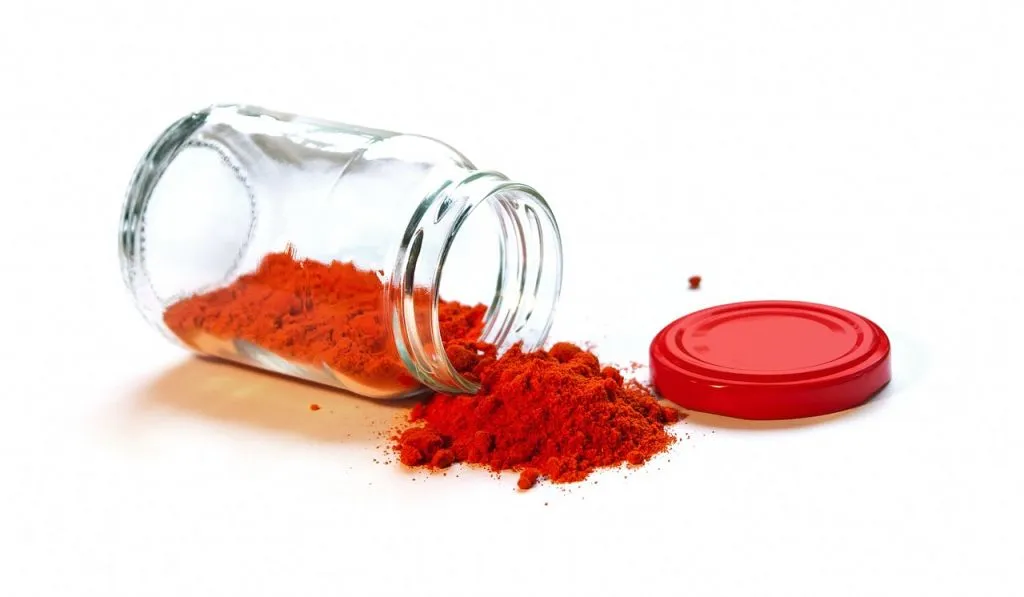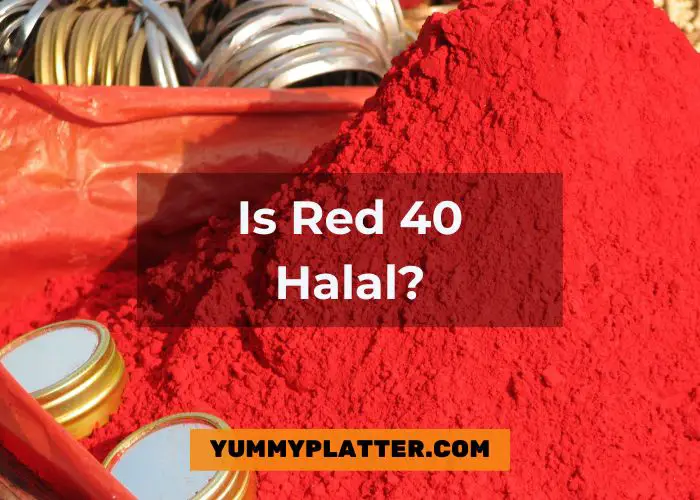Curious about Red 40 and its place in a halal diet? You’re in good company. As a widely used food coloring, Red 40 appears in a variety of products, sparking questions about its compatibility with halal guidelines. This vibrant dye has a backstory and composition that are worth examining for anyone adhering to a halal lifestyle. So, let’s unpack the details of Red 40, from its origins to its halal status. Whether navigating supermarket aisles or savoring your next snack, understanding if Red 40 is halal is key to making informed dietary choices. Join us as we dig into the colorful world of Red 40 and what it means for halal-conscious consumers.
Basic information
Originally developed to replace earlier synthetic dyes deemed unsafe, Red 40, or Allura Red AC, has become a staple in the food and beverage industry. This synthetic dye, derived from petroleum, boasts a bright red color that has made it a favorite among manufacturers for its visual appeal. In both the US and UK, companies incorporate Red 40 into a wide range of products, including candies, beverages, cosmetics, and certain medications, to achieve vibrant hues that attract consumers.
Despite its popularity, Red 40 has been the subject of health and safety debates, particularly concerning its effects on children’s behavior. Nevertheless, it remains a commonly used colorant, approved by regulatory bodies in these markets, thanks to its ability to maintain color stability under various storage and processing conditions.
It was discovered by the British company Imperial Chemical Industries (ICI) and patented in the 1970s. Introduced in the early 1970s, Red 40, also known as Allura Red AC, emerged as a popular synthetic dye. It was developed to replace Red No. 2, or amaranth after the latter was banned by regulatory authorities due to health concerns.
The discovery of Red 40 is attributed to efforts by scientists seeking safe and stable alternatives for use in food and other products. It gained approval for use in food products shortly after its introduction, becoming a widely accepted colorant in the food industry. This dye has since been used extensively in the United States and around the world, favored for its vibrant red hue and compatibility with a variety of products.
How is Red 40 made?
The production process of Red 40 involves making a synthetic red color from chemicals. Here’s a simplified explanation:
- Starting Materials: The main ingredients used to make Red 40 are petroleum-based chemicals. These chemicals serve as the building blocks for creating the red pigment.
- Chemical Synthesis: The chemicals undergo a series of reactions to create the specific molecules needed for the red color. These reactions are carefully controlled to ensure the desired color and quality.
- Purification: After the reactions, the mixture goes through a purification process. This helps remove any impurities and ensures that the final product is pure and safe for use in food.
- Drying: The purified red pigment is then dried to form a powder. This makes it easier to handle and mix into various food and beverage products.
- Quality Control: Throughout the production process, strict quality control measures are in place. This includes testing the color intensity, purity, and safety of the Red 40 to meet regulatory standards.
- Packaging: The final Red 40 powder is packaged into containers, ready to be distributed to food and beverage manufacturers. These manufacturers use it to add the characteristic red color to a variety of products.
Safe to consume?
From a health perspective, according to the EPA, Red Dye 40 has a low level of concern. In addition, the World Health Organization (WHO) and FAO (Food and Agriculture Organization) agree that the dietary exposure of individuals of all ages to the active ingredient red 40 is not considered to pose a health risk.
The ADI (Admissible Daily Intake) of Red Dye 40 for a person weighing 150 pounds (68 kilograms) is 3.2mg per pound (7mg per kg). An estimate of the amount of a substance that can be consumed daily over a lifetime without causing harm to one’s health is known as the ADI. However, Red 40 might have connections to animosity and mental issues like attention deficit hyperactive disorder (ADHD) in youngsters.

Consuming excess Red 40 can lead to potential health issues. Some individuals may experience adverse reactions like allergic responses, such as hives or itching. While Red 40 is generally considered safe within established limits, overconsumption may contribute to an increased intake of food additives, which is not advisable. Moderation is key to minimizing the risk of any potential negative effects associated with excessive consumption of Red 40. If someone experiences adverse reactions or has concerns, consulting with a healthcare professional is recommended.
Red 40 is used for many reasons. Some are- Adding color to improve the visual allure of food items. Covering bothersome varieties or changes in variety because of handling. Keeping up with consistency and consistency in variety all through bunches of an item. Giving an option in contrast to regular wellsprings of red color that might be costly or shaky
Also Read: Is Motts Halal?
The Big Question- Is Red 40 Halal?
Red 40 is a synthetic food dye, and its halal status can be influenced by factors such as the use of halal-certified raw materials and whether any alcohol-derived solvents are used during manufacturing.
Red 40 is produced using oil and contains no creature items or liquor in its creation cycle. Consequently, it doesn’t abuse the fundamental standards of halal utilization. This is because it is obtained from engineered or artificial sources as opposed to animal beings or liquor, the two of which are disallowed in halal eating regimens. As indicated by Islamic researchers, as long as these ingredients don’t contain any haram substances, they are viewed as halal.
What does Red 40 do to the body?
Ans- Potential effects of Red 40 on the body include:
- Allergic Reactions: Some people may be sensitive or allergic to Red 40, leading to symptoms such as hives, itching, or swelling. In rare cases, more severe allergic reactions may occur, and individuals experiencing such symptoms should seek medical attention.
- Hyperactivity (Controversial): There has been some research suggesting a possible link between certain food dyes, including Red 40, and hyperactivity in children. However, the evidence is not conclusive, and more research is needed to establish a clear connection.
- Individual Variability: Responses to Red 40 can vary among individuals. While most people can consume it without adverse effects, some may be more susceptible to reactions. If someone suspects sensitivity, it is advisable to consult with a healthcare professional.
Is Red 40 bad for anxiety?
Ans- There is no direct evidence to suggest that Red 40 causes anxiety. However, some individuals may be sensitive to artificial food dyes, and in rare cases, they may experience adverse reactions. If someone suspects a link between Red 40 consumption and anxiety, it is advisable to consult with a healthcare professional to determine individual sensitivities and potential triggers.
How long does Red 40 stay in your system?
Ans- The exact duration of Red 40 in the human system can vary. Generally, it is expected to be metabolized and eliminated within a few days through normal bodily processes. However, individual factors such as metabolism and overall health can influence the clearance time.
Final Words
Since Red 40 doesn’t violate the rules and regulations of the Islamic Law, it is considered to be halal and can be consumed by Muslims. But consuming too much of it might lead to health concerns.










Leave a reply